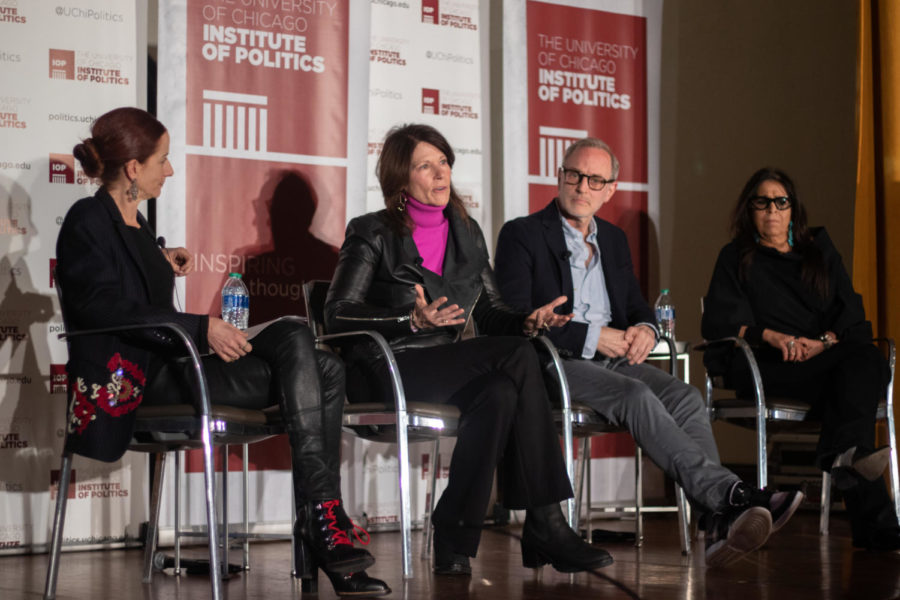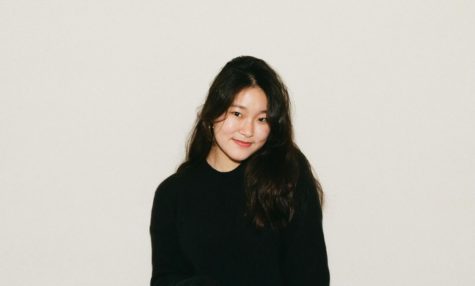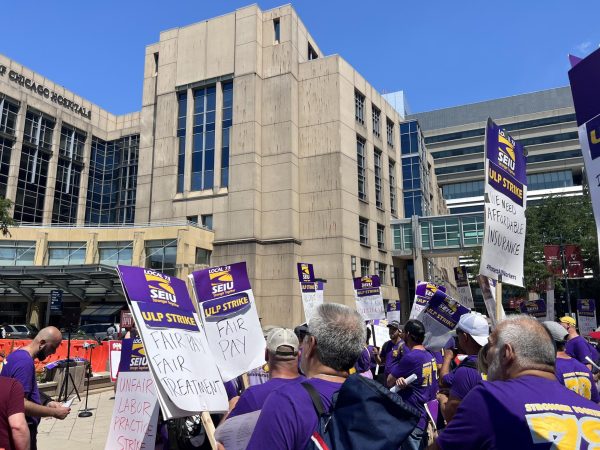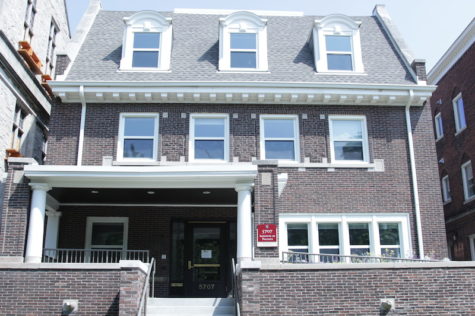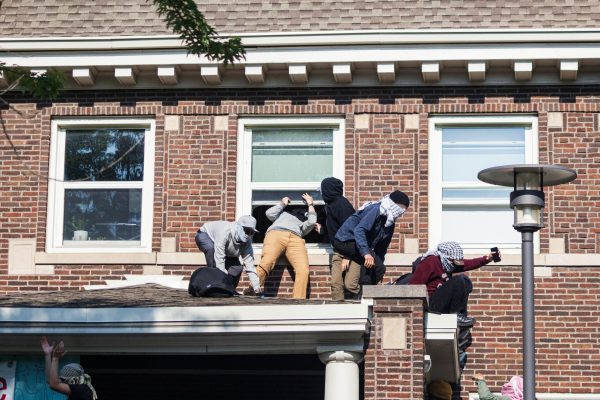Panelists Discuss Role of Fashion in Politics at IOP Event
New York Times Chief Fashion Critic Vanessa Friedman moderated a discussion on the intersection of fashion and politics with former U.S. Representative Cheri Bustos, fashion designer Maria Pinto, and costume designer Tom Broecker.
IOP Panelists discuss the intersection of fashion and politics.
April 11, 2023
Former U.S. Representative Cheri Bustos (D-IL), Chicago-based fashion designer Maria Pinto, and Emmy-winning costume designer Tom Broecker discussed the evolution and role of fashion in politics at an Institute of Politics (IOP) event on April 3 in Ida Noyes Hall. The event, titled “Dress Code: The Politics of Style,” was moderated by New York Times Chief Fashion Critic Vanessa Friedman.
To begin the discussion, Bustos, who represented Illinois’s 17th congressional district from 2013 to 2023, spoke about her favorite looks from politicians she has met throughout her career. Speaker Emerita Nancy Pelosi (D-CA), Representative Susie Lee (D-NV), and Senator Kyrsten Sinema (D-AZ) were among the few she praised for being admirable dressers.
“Kyrsten and I were elected the same year in the class of 2012,” Bustos said. “She had lost a bunch of weight, and so she was getting rid of her clothes and was like, ‘I’ll sell them to you.’ She said I could pick whatever I wanted for 50 bucks. And I’m telling you, I don’t know designers…but she had all these designer things, so the nicest clothes I own were from Kyrsten Sinema.”
Friedman then directed the conversation toward Broecker, asking about his experience designing costumes for actors depicting real-life politicians in Saturday Night Live (SNL). Broecker explained that each costume was curated to not only match the characters’ real-life counterparts as accurately as possible, but also to represent their personalities and storylines within the show.
“When you are [designing for a character who plays] a politician, you tend to want to match it specifically to that person,” Broecker said. “And so we have jumped through hoops to get the correct image. When Kerry Washington was on [SNL] as Michelle Obama, Michelle had worn a Tracy Reese dress. I knew which Tracy Reese dress it was, so I called Tracy Reese, and we got the specific dress.”
After working in comedy for a few years, Broecker expanded his work experience by designing costumes for the fictional Netflix series House of Cards. He recalled working on costumes for the show character Robin Wright, during which he was able to exercise more creative agency.
“I was given a chance to actually create something,” Broecker said. “My whole MO with Robin was that I wanted to get away from the idea that women had to wear pants to compete with men. I wanted people to see that someone can be powerful, and they can be feminine.”
This conversation surrounding female fashion in politics applied to Pinto’s work as well, whose designs were worn by former First Lady Michelle Obama. Friedman asked Pinto specifically about how wardrobe decisions were made for different occasions during the Obamas’ 2008 campaign trail.
“There was this whole consciousness of like, ‘Okay, Iowa, you’re going to play it down. New York, you’re going to step it up,’” Pinto said. “As far as [Michelle Obama’s] lack of jacket, there was no real conversation about it. I just thought she looked amazing in sleek and minimal, which is kind of my aesthetic anyway. And I also think it’s about not having clothes that are in the way. You want to walk into the room not thinking about what you’re wearing. You know, you’ve got a lot of other things to be focusing on, so the clothes should be so easy.”
The speakers then discussed the looks of first ladies throughout history, commenting on the deliberate messages behind outfit choices made by Hillary Clinton, Jackie Kennedy, and Melania Trump.
“I mean, that blue is an interesting one—the Melania Trump outfit,” Friedman said. “It was very reminiscent of Jackie Kennedy. It was a direct reference to that, which I think was an attempt to kind of frame what she thought it would mean to be a first lady. To me, there’s no way that that hasn’t been thought through.” Broecker agreed.
Afterwards, Friedman took questions from the audience. One student asked for the panelists’ thoughts on how gender is leveraged in fashion.
“I think clothing, as an inanimate thing, doesn’t have gender,” Broecker said. “The person causes the clothing to have gender. And currently, particularly amongst younger people, there’s an exploration into what gender identity is and the ability to be open to express something in them. That ultimately is what clothes are for. It was intended to be reflective of one’s inner life and external life. It’s a way of encompassing one’s totality as a human being.”


